Here's a pic of the back of the Audioengine A5+ speaker cabinet:

The power input is a typical 2-conductor removable power socket. The power cable will be your basic 16-14 gauge type like this:

These can be found for < $4 at just about any electronics store. There is absolutely no reason to spend more than that.
If the speaker has hum or noise on it, it's not because of this power cord; it's because the power supply inside the speaker is not doing an adequate job of filtering AC line hum, or worse, the speaker amplifier circuit is noisy.
"Clean power" generally refers to the output of an AC to DC converter, with respect to the ripple or noise on the line. (Video on ripple vs noise.)
It's possible to pick up noise from motors and other devices on the mains circuit, especially if they are physically and electrically close. (For example, a vacuum cleaner plugged into the same outlet or circuit branch as a stereo will usually cause audible clicks and static.)
The easy solution is to separate sources of noise by powering them from a separate circuit.
Wireworld's page on their power conditioning cables says this:
Wireworld power cords are designed to solve a completely different set of problems than audio and video cables. An ideal audio or video cable would pass the entire frequency range without alteration. However, an ideal power cord would pass only the 50Hz or 60Hz AC power, while blocking all higher frequencies, thus preventing power line noise and harmonics from degrading the sound and imaging quality of the system. Accordingly, our design objective and test methodology for these power cords was to provide sound and image quality that would be closest to the ultimate purity of battery power.
To achieve that objective, we developed Fluxfield Technology™, a unique internal structure incorporating Composilex® 2 insulation materials, which maximizes inductive and capacitive filtering to absorb power line noise and damp the electrical resonances that other cords and power conditioners cannot tame. Among the innovations of this design are dual low-impedance shields, which are closely coupled to the conductors to cancel unwanted energy.
Note the sentence "...closest to the ultimate purity of battery power." AC power, by definition, is alternating current, nothing like a battery, which is direct current (DC). There are a myriad of other suspect phrases in this, like "dual low-impedance shields."
Seriously, if you have AC line noise from other devices, there are cheaper and better ways of resolving it than getting an expensive cable that probably isn't a very good low-pass filter...
Edit:
If you really want to get something to filter the AC power going to audio systems, look at something like Furman power conditioners. They've been in the pro audio business for years, and the good news is, you can spend less than $75. For example, the Furman M-8x2 is $70 at Musician's Friend, and gives you eight outlets for your other audio/video equipment.


